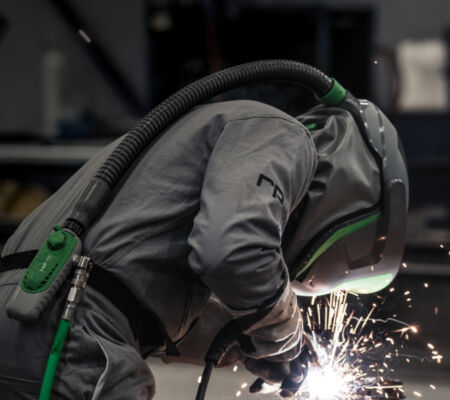
As we head into the warmer months the topic of climate conditions enters operators' and safety officers’ minds as heat becomes a daily battle.
Industrial workers are placed in hazardous environments every day. With engineering controls and personal protective equipment (PPE), these risks can be significantly reduced. However, the temperature they are operating in is something that is very difficult to maintain and control. Some PPE, while essential, can intensify the effects of severe heat and cold. Due to the uncontrollable nature of this, climate conditions make regulating body temperature potentially a major hazard.
Keeping up with production demands whilst maintaining operator safety is of paramount importance to businesses. Through understanding the impact of climate in industrial workplaces and appropriate measures that can be implemented to mitigate the risk, employers are able to gain some control over their environment to increase their workforce’s safety.
The dangers of operating in extreme temperatures
When the body becomes too warm, blood flow is increased to the skin in order to sweat to cool itself down. PPE can create a barrier for the sweat that is trying to evaporate from the skin. As the body struggles to regulate itself, it goes into heat exhaustion or heat stroke, leading to headaches, nausea, seizures and in some cases, death. The Occupational Safety and Health Administration (OSHA) found operators in temperatures exceeding 80ºF make on average five mistakes an hour, and 19 mistakes an hour after three hours. Heat stress has also been cited as one of the biggest contributing factors in preventable accidents at work. OSHA has stated that the construction industry accounts for more than 40% of heat-related worker deaths.
Similarly, operating in cold conditions has a whole host of dangerous effects. As your heart beats faster, blood pressure will rise. For anyone with chronic lung disease, asthma, chronic obstructive pulmonary disease or bronchitis, cold air exacerbates these issues and the stress put on the heart can be fatal. As the body’s temperature drops, blood flow is redirected to essential organs only which causes you to lose the sense of feeling making it difficult to hold onto equipment. Extreme cold also places operators at risk of getting hypothermia, in some cases, if left untreated this can also be fatal.
Unlike most typical worksite hazards, climate conditions in the workplace are often overlooked and there is this thinking and acceptance that there is little that can be done to make a difference, so this is not prioritized. However, as technology develops and a greater understanding of the effects of climate in workplaces is known, safety is becoming a priority. With this, new thinking around safety is applied and the technology in PPE design is making leaps and bounds towards improving operator health, safety, and wellbeing.
How to mitigate the risk
Workplaces take many steps to reduce the risk of climate impacting their workers by operating at a slower speed, taking more breaks, rotating staff for longer recovery, and scheduling work to cooler or warmer parts of the day. However, all these measures have an impact on productivity and efficiency, and for some industries such as firefighting, foundries or outdoor welding it is simply not feasible to mitigate the risk.
While PPE can worsen the effects of severe heat and cold, there is PPE available to help regulate temperature. One of the greatest advancements in respiratory protection has been the creation of climate control devices. These have completely revolutionized the operator's experience in otherwise uncomfortable and dangerous conditions. By incorporating this device with loose-fitting supplied air respirators, the user can adjust the temperature of their supplied air to be hot or cold. Airflow is then able to be directed around the head and down the upper body to help regulate body temperature. This subsequently enables the user to operate more efficiently, safely, and productively than ever before.
At home we do everything possible to keep ourselves warm in winter, and cool in summer, why not do this at work too?
RPB C40 Climate Control Device
Work comfortably in any temperature.
An advanced temperature control system for supplied air respirators.
Learn more about the C40